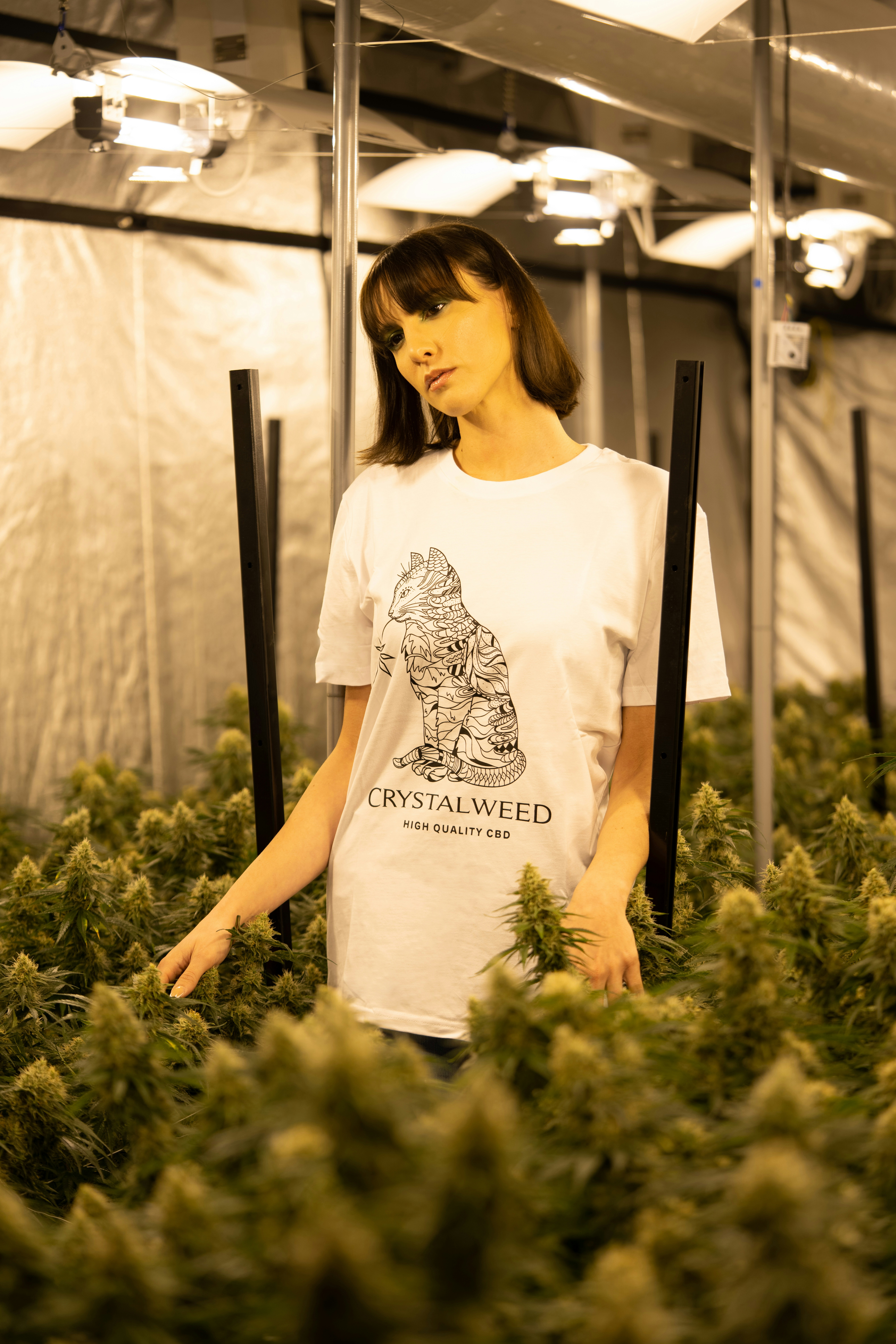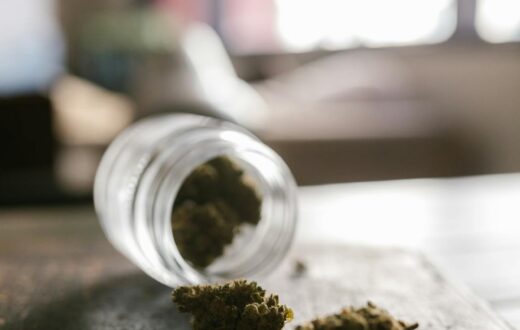Introduction to Candida Strain CBD
The Candida strain, a unique variety within the cannabis spectrum, has gained notable recognition in recent years, particularly among cultivators focused on maximizing CBD production. Originating from a careful selection process, this strain is renowned for its exceptional yield and heightened cannabidiol (CBD) concentrations. The Candida strain’s genetics are specifically attuned to foster the development of CBD-rich flowers, setting it apart from traditional THC-dominant cannabis varieties.
A key advantage of growing the Candida strain is its resilience and adaptability in diverse growing conditions. It has shown a remarkable ability to thrive in both indoor and outdoor environments, which broadens its appeal to various cultivators. The strain typically exhibits a short flowering period, allowing growers to achieve multiple harvests within a single growing season. This efficiency not only maximizes productivity but also supports sustainable farming practices.
The benefits of the Candida strain extend beyond cultivation. Users often report a range of therapeutic effects attributed to its high CBD content. While individual experiences may vary, many advocate for the strain’s potential to alleviate anxiety, promote relaxation, and provide relief from chronic pain without the psychoactive effects commonly associated with THC. Consequently, the Candida strain has garnered a loyal following among CBD enthusiasts and medical users striving for a non-intoxicating alternative.
Understanding how to grow Candida strain CBD successfully hinges on recognizing its specific needs for nutrients and environmental conditions. Armed with proper techniques and knowledge, growers can leverage the strain’s distinct advantages to yield a superior product. By delving into this guide, cultivators will gain insights into optimizing their growing practices while unlocking the full potential of the Candida strain in enhancing their cannabis cultivation journey.
Understanding CBD: What Sets It Apart from THC
Cannabidiol (CBD) and tetrahydrocannabinol (THC) are two of the most well-known cannabinoids derived from the cannabis plant. While both compounds interact with the body’s endocannabinoid system, their effects and properties diverge significantly. The primary distinction lies in their psychoactive characteristics; CBD is non-psychoactive, meaning it does not produce the “high” typically associated with cannabis. In contrast, THC is the psychoactive component that alters mental states and produces euphoria. This critical difference is one reason why many growers are focusing on strains like Candida, which emphasize CBD content over THC.
The therapeutic potential of CBD has garnered considerable attention in recent years. Researchers have identified a range of health benefits associated with CBD, including its potential for pain relief, anti-inflammatory properties, and ability to alleviate anxiety. These benefits make CBD a sought-after compound for individuals seeking natural wellness solutions without the psychoactive effects of THC. Consequently, the cultivation of CBD-rich strains, such as the Candida strain, is becoming increasingly popular among cannabis growers aiming to meet the growing demand for health-oriented products.
Furthermore, the non-psychoactive nature of CBD allows it to be more accessible to a wider audience, including those who may be hesitant to use cannabis due to its psychoactive effects. This diversification in the potential market can encourage growers to explore and cultivate high-CBD strains like Candida, thus enhancing their offerings while contributing to the wellness space. As a result, understanding the distinctions between CBD and THC is crucial for growers who are dedicated to maximizing the benefits of their cannabis cultivation, particularly when focusing on non-psychoactive strains aimed at health and wellness applications.
Ideal Growing Conditions for Candida Strain CBD
To successfully cultivate the Candida strain CBD, understanding the ideal growing conditions is essential. Cannabis plants thrive under specific environmental factors that can significantly impact their growth and overall yield. When learning how to grow Candida strain CBD, one should focus on temperature, humidity, light exposure, and soil type to create an optimal growing environment.
The ideal temperature range for Candida strain CBD is between 68°F to 77°F (20°C to 25°C) during the vegetative stage, while slightly warmer temperatures of around 75°F to 85°F (24°C to 29°C) are preferable during the flowering phase. Maintaining consistent temperatures within this range allows the plants to establish a strong root system and promotes healthy foliage growth. It is essential to monitor temperature fluctuations, as extreme variations can impair development.
Humidity levels play a crucial role in the growth of Candida strain CBD. During the vegetative stage, relative humidity levels should be maintained around 40% to 70%, gradually decreasing to 40% to 50% during flowering. High humidity fosters robust vegetative growth, but excessive moisture can lead to mold and mildew, which are detrimental to cannabis plants. Proper ventilation and air circulation assist in regulating humidity levels, ensuring that your plants remain healthy.
When it comes to light exposure, Candida strain CBD requires ample light for optimal growth. For indoor growers, a balanced mix of blue and red spectrum light during the vegetative and flowering stages, respectively, is recommended. Outdoor growers should position their plants to receive at least six to eight hours of direct sunlight daily for vigorous growth. Lastly, soil type is paramount; well-draining, nutrient-rich soil with a balanced pH of 6.0 to 7.0 is ideal for the Candida strain CBD, as it facilitates healthy root development and nutrient uptake.
Propagation Techniques for Candida Strain CBD
When considering how to grow Candida strain CBD, understanding the various propagation techniques is essential for successful cultivation. Two primary methods for propagating this cannabis strain are seeds and clones. Each approach has distinct advantages and disadvantages, which can significantly influence the growth and quality of the plants in response to specific environments.
The use of seeds for propagation is the most traditional method adopted by many growers. Seeds from high-quality Candida strain CBD are generally robust and exhibit diverse genetic traits. This variability can lead to discovering plants with unique characteristics, such as higher CBD content or improved resistance to pests. However, seeds can also present challenges such as longer germination periods and potential issues with seedling survival, particularly if environmental conditions are not optimal. Growers should be aware that ensuring consistent quality across numerous seeds can be more difficult compared to the uniformity offered by clones.
On the other hand, cloning is a favored technique for those wishing to replicate specific characteristics of a desirable Candida strain CBD plant. Clones are cuttings taken from an existing plant, allowing growers to maintain genetic consistency throughout their crop. This method can lead to earlier yields, as cloned plants often establish faster than those grown from seeds. Nonetheless, clones can be susceptible to the same diseases and pests as their parent plants, which may present challenges in maintaining plant health. Additionally, sourcing healthy mother plants is critical to ensure the quality of the clones being produced.
Ultimately, the choice between seeds and clones for growing Candida strain CBD depends on the resources available, as well as the grower’s experience and desired outcomes. Understanding these propagation methods equips cannabis growers with the necessary knowledge to make informed decisions, enhancing their cultivation process for optimal plant health and yield.
Nutrient Requirements and Feeding Schedule
The Candida strain of cannabis, known for its unique properties, requires a well-structured nutrient regime to thrive throughout its growth stages. Understanding the specific nutrient needs during both the vegetative and flowering phases is crucial for maximizing yield and promoting overall plant health. During the vegetative stage, which typically lasts for four to six weeks, the plant focuses on establishing a robust root system and leafy canopy. Nutrients that are high in nitrogen, such as those found in most vegetative fertilizers, are essential during this period to support vigorous growth and leaf development.
As the plant transitions into the flowering phase, the nutrient requirements shift significantly. The Candida strain will benefit from fertilizers that are higher in phosphorus and potassium to encourage flowering and fruiting. A nutrient blend with an N-P-K ratio that reflects these needs can greatly enhance the flowering process. Typically, growers should switch their feeding regimen to a bloom formula approximately two weeks after initiating the flowering stage, which might last anywhere from 8 to 12 weeks depending on environmental factors and specific cultivars.
A detailed feeding schedule is paramount for cannabis growers seeking to optimize their crops. A recommended feeding schedule might start by delivering nutrients every other watering during the vegetative phase, allowing for additional watering without added nutrients to prevent over-fertilization. As the plant matures towards the flowering phase, transitioning to weekly feedings will ensure that the Candida strain receives essential nutrients more consistently. Growers should monitor their plants’ responses, making adjustments as necessary based on visual observations and pH levels of the growing medium.
In conclusion, understanding how to grow Candida strain CBD involves recognizing and meeting the specific nutrient requirements suited to each developmental stage. By adhering to a structured feeding schedule that adjusts with the plant’s growth, cultivators can maximize both the health and yield of their cannabis plants.
Pest and Disease Management Strategies
Growing the Candida strain CBD can be a rewarding experience; however, it is not without its challenges. One of the most significant concerns for cannabis growers is the management of pests and diseases that may affect the overall health and yield of the plants. Common pests such as aphids, spider mites, whiteflies, and thrips can wreak havoc on a cannabis crop, while diseases like powdery mildew, root rot, and gray mold can severely impact plant vitality. It is essential to be proactive in recognizing these threats to implement effective pest management strategies.
Integrated Pest Management (IPM) is a multifaceted approach that combines biological, cultural, and mechanical controls to manage pests. For instance, introducing beneficial insects such as ladybugs and predatory mites can help keep harmful pest populations in check. Additionally, maintaining optimal grow conditions, including humidity and temperature, is crucial for minimizing the risk of fungal diseases like powdery mildew. Regularly inspecting plants for early signs of infestation can also aid in quick intervention, preventing pests from establishing themselves.
Organic solutions are increasingly popular among cannabis growers seeking to cultivate the Candida strain CBD sustainably. Neem oil, diatomaceous earth, and insecticidal soaps are effective organic treatments that can deter pests without harming the plants or the environment. Another technique involves crop rotation and diversity, which helps disrupt pest life cycles and reduces the likelihood of disease outbreaks. Effective sanitation practices, such as cleaning tools and containers, are vital to preventing the spread of pathogens.
By employing these pest and disease management strategies, cannabis growers can nurture their Candida strain CBD plants more effectively, leading to healthier growth and improved yields. Understanding how to grow Candida strain CBD while safeguarding against pests will ultimately enhance the success of cultivating this unique variety.
Harvesting Candida Strain CBD: Timing and Techniques
Harvesting the Candida strain CBD at the right time is crucial to ensuring the highest quality of the final product. The optimal harvesting period typically falls when the trichomes, small resin glands on the flowers, reach maturity. Observing these trichomes can offer insights into the right timing; they should transition from clear to a milky white color, indicating peak THC and CBD levels. Some growers prefer waiting until a percentage of trichomes turn amber, which may lead to a more sedative effect due to increased CBN levels. Regularly checking trichome maturity with a jeweler’s loupe or a microscope will produce the best results in determining the right moment for harvest.
Once the plants are deemed ready for harvest, the methods employed can significantly influence the quality of the CBD extraction. Techniques such as cutting the stalk close to the base are widely used by growers. It is advisable to wear gloves to minimize the transfer of oils and to prevent accidental damage to the sticky resin glands. A sharp, sanitized tool is also essential during this process to avoid unnecessary crushing of the plant tissue, which could compromise the quality of CBD.
In order to maintain the integrity of the Candida strain, handle the harvested buds with care to limit the loss of trichomes. The buds should be gently removed and placed in a dark, cool environment to dry, ideally with controlled humidity levels. Following proper handling and drying procedures is paramount, as excessive moisture can cause mold growth, while too much heat can degrade cannabinoids and terpenes. Understanding how to grow Candida strain CBD leads not only to cultivating the plant but also to mastering the harvest, ensuring the optimal quality and potency of the final product.
Curing and Storing CBD: Best Practices
Curing and storing CBD from the Candida strain plays a significant role in maintaining its flavor, potency, and overall quality. Proper curing methods are crucial for cannabis growers who aspire to enhance the end product’s sensory and therapeutic qualities. To initiate the curing process, it is important to begin with well-harvested and dried cannabis. Once the plants are harvested, they should be dried slowly in a controlled environment with temperatures between 60°F and 70°F (15°C to 21°C) and humidity levels around 45% to 55%. This approach helps to preserve terpenes, which contribute to the aroma and flavor profile of the CBD.
After reaching an optimal dryness level, typically indicated by the smaller stems snapping rather than bending, the buds can be trimmed and placed in airtight containers for curing. It is advisable to use glass jars, as they provide an oxygen-tight seal while also allowing for easy monitoring of the buds. During the first week of curing, it is recommended to open these containers several times a day to facilitate airflow and prevent mold. This technique, often referred to as “burping,” helps to ensure that excess moisture is released, allowing for a more controlled curing process.
Once the initial curing phase is complete, the jars can be sealed and stored in a cool, dark place to enhance the flavors further. This phase can last anywhere from a few weeks to several months, with longer curing times generally yielding richer flavors and stronger potency. Proper storage is equally important in prolonging the shelf life of CBD products. To maintain the integrity of the CBD, it should be stored in a cool, dark location, ideally in a climate-controlled environment, away from light, heat, and humidity. By adhering to these best practices for curing and storing CBD from the Candida strain, cannabis growers can significantly enhance the quality and longevity of their products.
Conclusion and Final Thoughts
Growing the Candida strain for CBD can offer numerous advantages for both personal and commercial cannabis cultivators. Throughout this comprehensive guide, we have explored various techniques and best practices that can enhance the cultivation process. From understanding the unique characteristics of the Candida strain to implementing proper nutrient management and environmental controls, these strategies are essential for achieving optimal growth and yield. It is evident that cultivating the Candida strain can lead to high-quality CBD products, making it a valuable addition to any grower’s repertoire.
As we have seen, attention to detail in the growing environment—including light, humidity, temperature, and soil conditions—is crucial for the successful cultivation of this specific strain. Adopting practices such as regular monitoring and adjustments will ensure that growers can maximize the potential of their Candida plants. Furthermore, integrating organic methods into the growth process can enhance not only the health of the plants but also the quality of the CBD extract.
We encourage all cannabis growers to implement these techniques and observe the results in their personal or professional growing endeavors. Sharing experiences within the cannabis community can foster a collective learning atmosphere, where growers can offer insights and support to one another. Let us remember that the cultivation of the Candida strain for CBD is not merely a task but a journey that can lead to rewarding experiences and valuable knowledge. Join us in this exploration and feel free to reach out for further information or to exchange experiences with fellow cultivators. Your contribution can help build a robust community dedicated to the successful and sustainable cultivation of cannabis.














